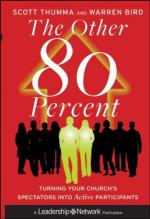As true Wit generally consists in this Resemblance and Congruity of Ideas, false Wit chiefly consists in the Resemblance and Congruity sometimes of single Letters, as in Anagrams, Chronograms, Lipograms, and Acrosticks: Sometimes of Syllables, as in Ecchos and Doggerel Rhymes: Sometimes of Words, as in Punns and Quibbles; and sometimes of whole Sentences or Poems, cast into the Figures of Eggs, Axes, or Altars: Nay, some carry the Notion of Wit so far, as to ascribe it even to external Mimickry; and to look upon a Man as an ingenious Person, that can resemble the Tone, Posture, or Face of another.
As true Wit consists in the Resemblance of Ideas, and false Wit in the Resemblance of Words, according to the foregoing Instances; there is another kind of Wit which consists partly in the Resemblance of Ideas, and partly in the Resemblance of Words; which for Distinction Sake I shall call mixt Wit. This kind of Wit is that which abounds in Cowley, more than in any Author that ever wrote. Mr. Waller has likewise a great deal of it. Mr. Dryden is very sparing in it. Milton had a Genius much above it. Spencer is in the same Class with Milton. The Italians, even in their Epic Poetry, are full of it. Monsieur Boileau, who formed himself upon the Ancient Poets, has every where rejected it with Scorn. If we look after mixt Wit among the Greek Writers, we shall find it no where but in the Epigrammatists. There are indeed some Strokes of it in the little Poem ascribed to Musoeus, which by that, as well as many other Marks, betrays it self to be a modern Composition. If we look into the Latin Writers, we find none of this mixt Wit in Virgil, Lucretius, or Catullus; very little in Horace, but a great deal of it in Ovid, and scarce any thing else in Martial.




